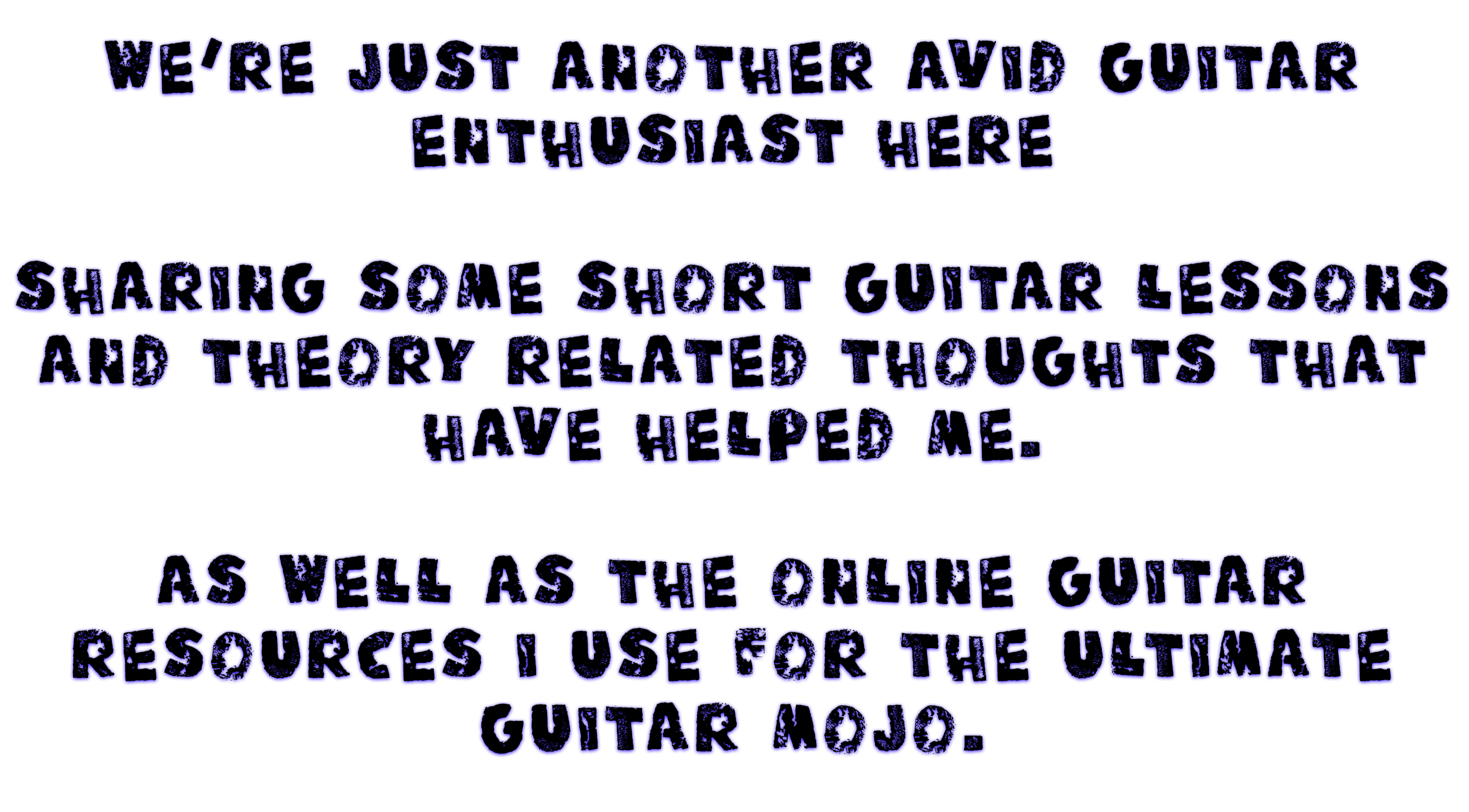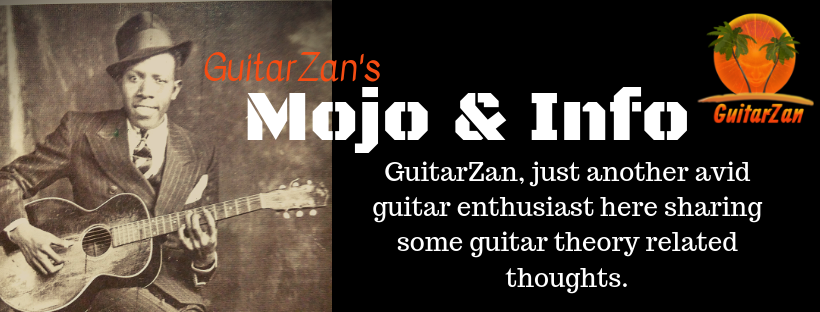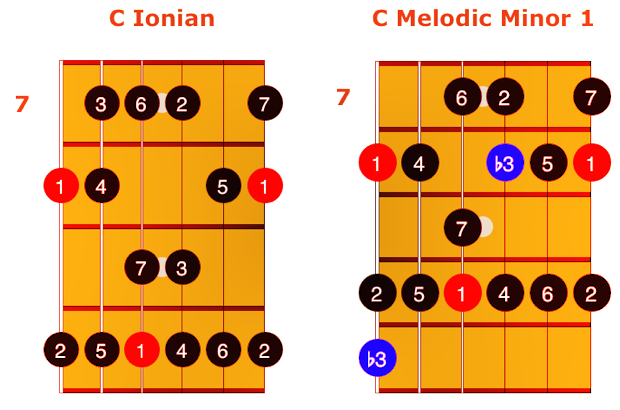MELODIC MINOR SCALE - MINOR/MAJOR MOJO fOR THE ROCKER
Tip 1-You're Just a Half Step Away
Welcome to this complete guide to the universe of melodic minor mojo & info. The melodic minor scale, the scale mostly used and abused by most jazzer size players and not so often thought of as a go-to scale for most rock players. Many fusion and rock player have used the mojo of the melodic minor scale to step out of the box and create some killer sounds and riffs and to think its been there all along just a half step away. If you know your major scale and lower the 3rd of the scale by a half step you're there. So what is a Melodic Minor scale anyway? The Melodic Minor scale is a major scale with a lowered third degree, or you could look at it as a natural minor scale with a raised sixth and seventh. Either way, the scale formula is (1-2-b3-4-5-6-7-8). For me, the best way to see the Melodic Minor scale patterns is to think of them as major scales first, and then just lower the third. So if you know your major scales inside and out and you should, then with minimal modification and you should be up and running pretty quickly. This has killer mojo application as well because it not only lets you use the entire neck sooner; it shows you where the third is in each scale shape at the same time. Killer Mojo.
I think of the melodic minor not as a set of fingerings,
but as a modification of the major scale: if I know the notes on the guitar, I just lower the 3rd by a half step in the major scale to get the melodic minor.
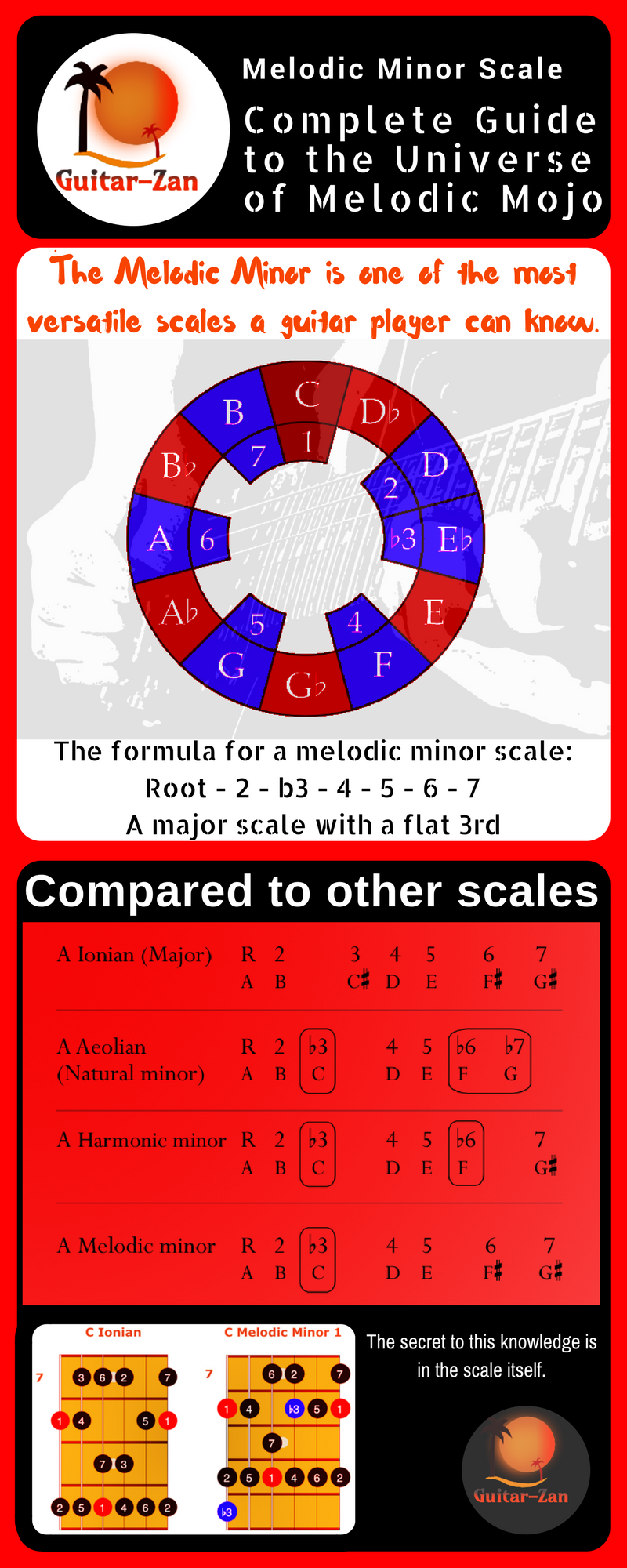
83,471 Interactive Video Lessons Anywhere, Anytime, Any Device, At Your Own Pace!
Streaming Access to All Courses & Song Lessons!
CHORDS OF THE MELODIC MINOR SCALE
Tip 2-Know Your Harmony
Scales by themselves are not much more than exercises. However, you can unlock your mojo with the sound of each and every scale by learning to use what chords to use them with. This will lead us to the next tip, the modes. ( more on that later)The secret to this mojo is in the scale itself. The Melodic Minor scale is most often used as a source for melodies, rather than chords. There are seven triads of the melodic minor scale. The mojo begins when we want to add one more note to each chord, making the triads into 7th chords.
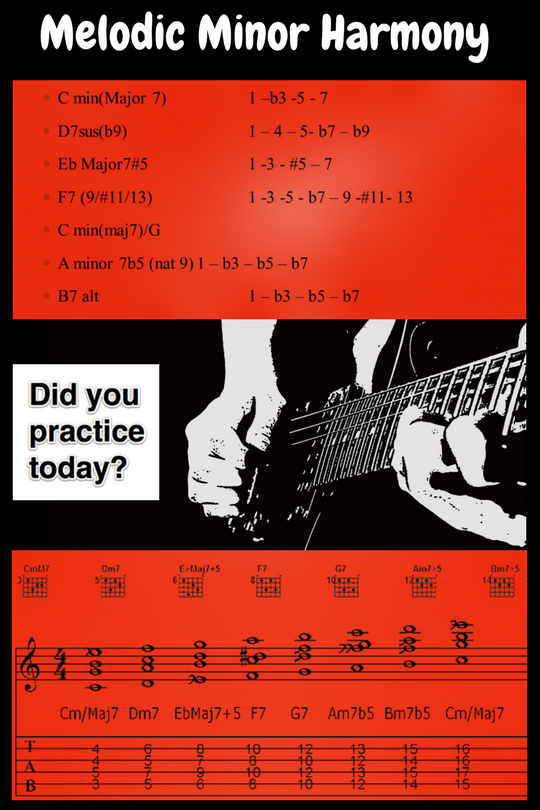
The first chord contains notes C, Eb, G, B. This is the 1st, 3rd, 5th, and 7th note of the scale. This is a Cm/Maj7 chord. That name tells us that it is a C minor chord but with a major 7- the B. It's an odd sounding chord, at first but after the sound gets in your ears a bit things start to open up. They all have a strange vibe to them at first, a lot of tension and no release.
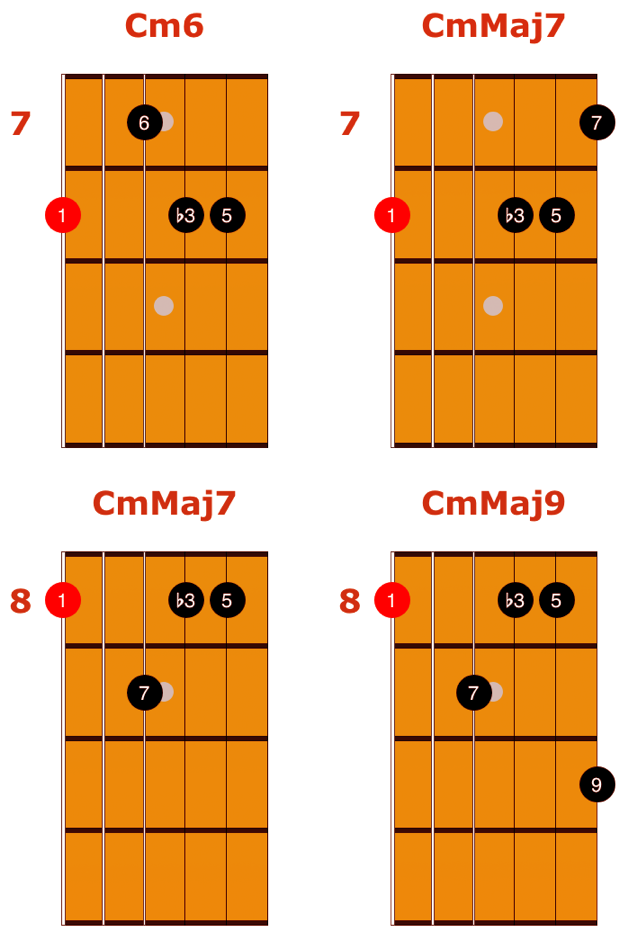
GET YOUR MODAL MELODIC MINOR MOJO WORKING
Tip 3-Know The Modes
So how do we use those wild and crazy sounding chords
Here is an exercise for the C melodic minor scale.

There are many others, as well as modes of the C melodic minor. To make things worse, many guitarists use the melodic minor of one key over chords of another, like using D melodic minor over a G7 in the key of C.
Just like the major scale, we can form modes from the Melodic Minor scale, by changing which note is regarded as the root. For instance, by taking the notes of C Melodic Minor but starting on F we will have the F Lydian Dominant scale: F, G, A, B, C, D, Eb, F.
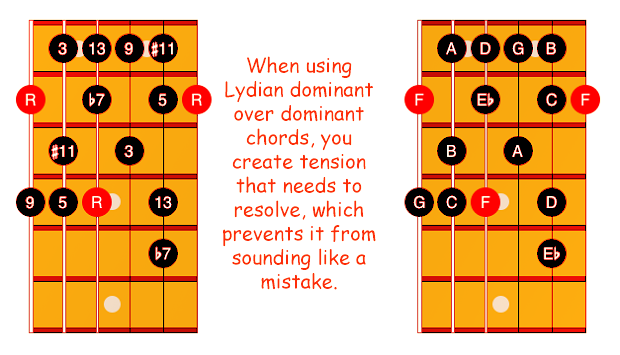
The 7 Modes of the Melodic Minor Scale
Melodic minor is a popular scale in jazz and fusion. It also is used to add some mojo to a minor solo or to twist the ear a little bit with that Sharp 7 degree in a minor solo/lick/riff. It is commonly used over minor(maj7) chords. The chords will sometimes be placed with a minor 7th chord ( cm7 -cmMaj7)

Here's a jam track that uses the above chords to practice switching between C Dorian and C Melodic Minor.
The other 6 modes of this scale are all very cool sounding and all have their distinct applications.
The mode names:
Melodic Minor= 1, 2, b3, 4, 5 ,6 ,7 (modes is Minor)
Dorian b2= 1, b2, b3, 4, 5, 6, b7 (modes is Minor)
Lydian Augmented= 1, 2, 3, #4, #5, 6, 7 (modes is Major)
Lydian b7= 1 ,2, 3, #4, 5, 6, b7 (modes is Dominant)
Mixolydian b6= 1, 2, 3, 4, 5, b6, b7 (modes is Dominant)
Locrian Natural 2= 1, 2, b3, 4, b5, b6, b7 (modes is Minor)
Super Locrian= 1, b2, b3, b4, b5, b6, b7 (modes is Dominant)
To get different modes over the key of C, we will need to play the melodic minor scale of other keys, but maintaining the root note as C. So the root will always remain as C, even though we are playing melodic minor scales in other keys.
If you like this post or have any comments please do so.
Thanks

